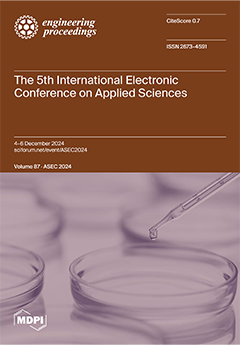Triazolopyrimidine and its analogs represent an important scaffold in medicinal chemistry research. The heterocycle of 1,2,4-triazolo[1,5-a] pyrimidine (1,2,4-TAP) serves as a bioisostere candidate for purine scaffolds, N-acetylated lysine, and carboxylic acid. This study modeled the quantitative structure–activity relationship (QSAR) of 125 congeners of
[...] Read more.
Triazolopyrimidine and its analogs represent an important scaffold in medicinal chemistry research. The heterocycle of 1,2,4-triazolo[1,5-a] pyrimidine (1,2,4-TAP) serves as a bioisostere candidate for purine scaffolds, N-acetylated lysine, and carboxylic acid. This study modeled the quantitative structure–activity relationship (QSAR) of 125 congeners of 1,2,4-TAP from the ChEMBL database in the inhibition of
Plasmodium falciparum using six machine learning algorithms. The most significant features among 306 molecular descriptors, including one molecular outlier, were selected using recursive feature elimination. A ratio of 20% was used to split the x- and y-matrices into 99 training and 24 test compounds. The regression models were built using machine learning sci-kit-learn algorithms (multiple linear regression (MLR), k-nearest neighbours (kNN), support vector regressor (SVR), random forest regressor (RFR) RIDGE regression, and LASSO). Model performance was evaluated using the coefficient of determination (R
2), mean squared error (MSE), mean absolute error (MAE), root mean squared error (RMSE),
p-values, F-statistic, and variance inflation factor (VIF). Five significant variables were considered in constructing the model (
p < 0.05) with the following regression equation: pIC
50 = 5.90 − 0.71npr1 − 1.52pmi3 + 0.88slogP − 0.57vsurf-CW2 + 1.11vsurf-W2. On five-fold cross-validation, three algorithms—kNN (MSE = 0.46, R
2 = 0.54, MAE = 0.54, RMSE = 0.68), SVR (MSE = 0.33, R
2 = 0.67, MAE = 0.46, RMSE = 0.57), and RFR (MSE = 0.43, R
2 = 0.58, MAE = 0.51, RMSE = 0.66)—showed strong robustness, efficiency, and reliability in predicting the pIC
50 of 1,2,4-triazolo[1,5-a]pyrimidine. The models provided useful data on the functionalities necessary for developing more potent 1,2,4-TAP analogs as anti-malarial agents.
Full article




